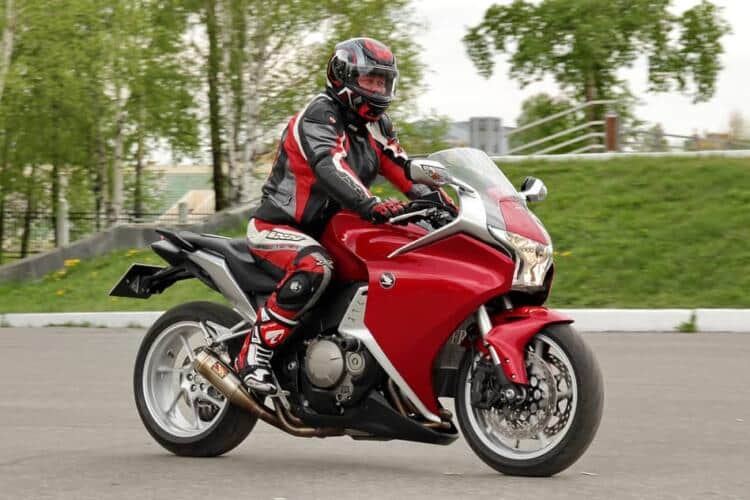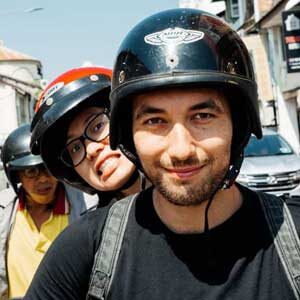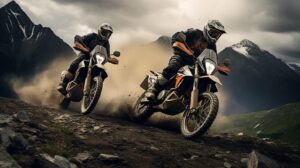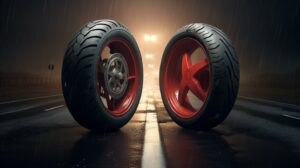Riding a motorcycle long distances can be exhausting in itself, but the fatigue can be worsened by improper riding posture.
So, what is an appropriate motorcycle riding position for different motorcycles? Posture will depend slightly on the motorcycle style, but on any motorcycle, Your ears, shoulders and hips should all be aligned vertically. Your back should be straight, your arms slightly bent with hands relaxed on the bars. Your legs should be placed comfortably on the pegs and your reach should not impede your ability to steer the bike.
The best riding positions for a motorcycle involve a straight upper body and an appropriate body position to evade pain. A proper motorcycle riding position varies on different motorcycles. However, there are uniform rules for all types of motorcycles to prevent pain and exhaustion. There is a standard riding position for motorcycle riders for a safe and enjoyable ride. Keeping the upper body forward allows you to take control of the motorcycle. A slightly pushed head position can cause pain. Slight leaned forward while riding motorcycles is a standard position for the body.
Let’s go further into the specific riding position for each motorcycle style.
Sportbike
Sportbikes, which are designed for speed, force your body into a more aggressive, racing position with foot pegs that are higher and farther back, and drop handlebars to put you in an aerodynamic position. But let’s assume you’re not on the track. What’s the most comfortable riding position for a sport bike rider?
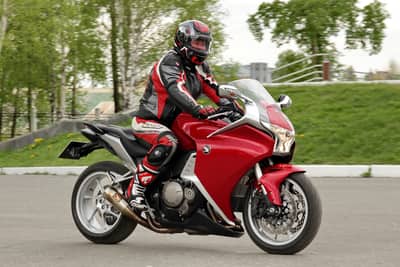
With your feet placed firmly on the foot pegs and your butt comfortable on the seat, you should be leaning forward with your arms relaxed on the handlebars, you wouldn’t want your wrist hurting while riding your motorcycle. Your upper body weight should not be 100% supported by your arms. Instead, much if that support should come from your back muscles.
Even though you are leaning forward on the bike, your ears, back, and hips should be in alignment. Your back shouldn’t be hunched over or arched, and your core muscles should be slightly engaged.
Your elbows should be slightly bent and your wrists should also be straight and neutral; no bending at the wrist. Because of a sportbike’s drop handlebars, it’s tempting to lock the elbows and put your weight on the bars. But, over time, this can cause pain in the wrists and shoulders. So, be sure to keep your arms relaxed.
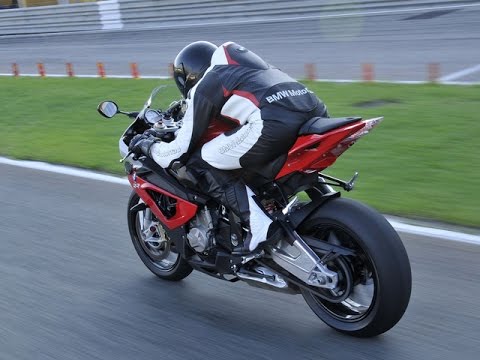
An alternate position, to allow your arms to rest, is to get into a tucked, racing position. This is a good one if you have a long, straight stretch of highway to get through. Sit back in the seat, lean forward and rest your chest on the tank, let your elbows drop down on either side of the tank and keep your hands relaxed on the bars. Be extra cautious because you won’t have easy access to the clutch and brake which will slow your reaction time.
If you’re not used to this type of bike riding position, or if you have a week core, you may find it difficult to take your special bikes on long distance rides. Many riders complain of back or wrist pain after long rides on straight roads. But, as soon as they get into the canyons and the posture of their body changes to a more active riding position, those aches and pains go away. It makes sense because this is what those bikes are designed for.
Standard Motorcycle
Standard bikes, like the Bonneville, or the Honda CB1100, are inherently more comfortable than sportbikes. Their foot beg position is more forward, which places your legs in more of a regular sitting position. The upright handlebars mean you don’t have to lean forward as much.
But, you still need to practice good posture when riding. The most important is to keep your back upright and straight and avoid the temptation to slouch your shoulders. Your chest should be upright, which will help keep your shoulders down and your back straight.
The handlebars should be adjusted so that when you’re in a comfortable, upright position, you should not be reaching for the bars. Instead, the bars should be at a distance where your elbows are slightly bent and relaxed. The ideal position for a standard motorcycle should look similar to someone sitting at their desk, typing. (But having a lot more fun)
Adventure Bike
Adventure motorcycles are designed for long distance riding, but a rider still needs to be aware of good posture. Find a position on the seat so that your pelvis is in a neutral point, not rotated forward and not rotated back, which can cause slouching.
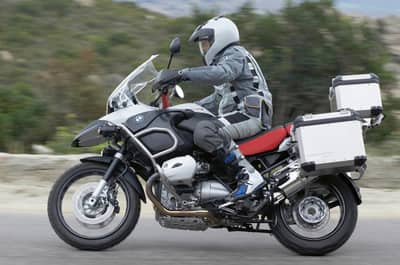
You also want your back muscles to be relaxed, using the structure of your spine for support. Your shoulders should be down and aligned even with your back. Avoid puffing your chest up and shrugging your shoulders. This will cause shoulder and neck in a very short time. So, keep your shoulders down.
Adventure riding often requires us to stand while riding. Good posture while standing means you should be leaning slightly forward, over your tank. Your legs should be flexible, but straight and should support most of your weight so you’re not putting your weight on the handlebars. When approaching a corner, you can bend your knees and shift your weight towards the back of the motorcycle.
Sport Touring Motorcycles
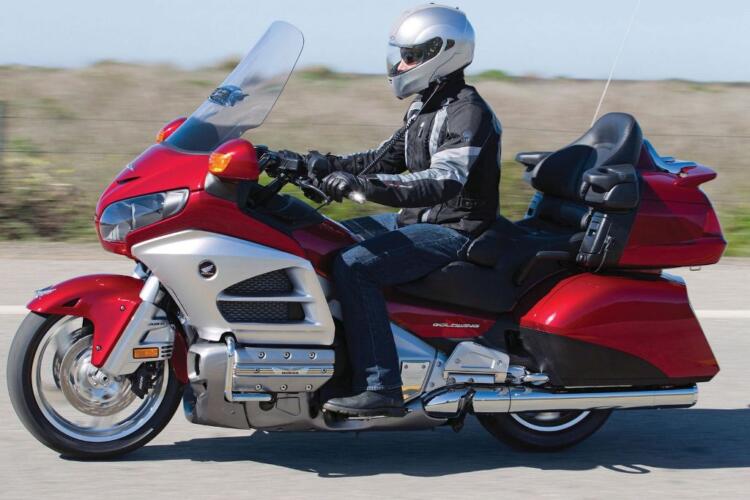
A sport touring motorcycle is one of the more comfortable styles of motorcycle you can own. It has a neutral riding position which makes it difficult to get your posture wrong. But, like any other motorcycle, it’s important to keep your back straight and shoulders relaxed.
The biggest concern with larger motorcycles is the handlebar position. Adjust the bars so your arms are slightly bent and you’re not leaning on the bars. I feel a bit like a broken record with this rule, but, it’s the most important one. Too much stress on the arms and shoulders will wear you out pretty quick.
Cruiser
Cruiser motorcycles generally have footpegs in a more forward position. Many riders prefer this foot position because it reduces stiffness in the knees and hips. One thing to be concerned with is your reach to the handlebars. Because your legs are already forward, handlebars that are too far forward will cause you to either hunch over, or lean over into a C shape, which won’t result in a comfortable ride over time. So, a cruiser position can add to your back pain.
Even with the legs forward, your back should be straight, and your ears, shoulders and hips should be in a vertical line. Adjust your handlebars so that your arms are slightly bent, wrists are level, and you’re not reaching out so far that you can’t control the bike in a turn.
Ape Hangers
Some riders love tall handlebars, commonly referred to as ape hangers. I personally have never ridden with them, but I’ve often wondered if it is comfortable and if it impedes your ability to control the bike. The answer depends on how high the rider has to reach up.
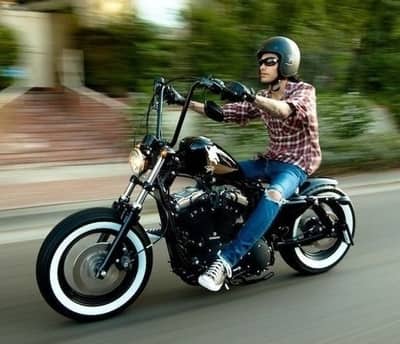
The general consensus is to make sure the handlebars are at a height somewhere between your heart and your shoulders. Then the bars put your hands higher than your shoulders, blood flow to the fingers is reduced, and riders will often experience numbness. Once your fingers go numb, it’s more difficult to control the bike and use the clutch and brake levers.
On the plus side, some riders notice that they have less back pain with higher bars. It prevents them from having to lean over, yet it still allows them to keep their back upright. As with any motorcycle, it’s still important to avoid slouching, and keep the shoulders relaxed.
Dirt Bikes
Dirt bikes are a whole different ball game when it comes to proper body posture. Being such an active riding style, there are many different body positions that are used for different parts of a ride. Standing, sitting, high on the tank, back in the seat, etc. Dirt bike body positioning should be a separate article and would be too much to cover here.
So, the final bike riding tip, you’ll notice that there are a lot of commonalities in the correct motorcycle riding position no matter what style of motorcycle you ride. The most important one being to relax, especially your arms and shoulders.
Proper riding posture starts with choosing the right size motorcycle for your height and arm length, and continues with proper adjustments of the handlebars and controls, ending with you being aware of your body position as you ride.

